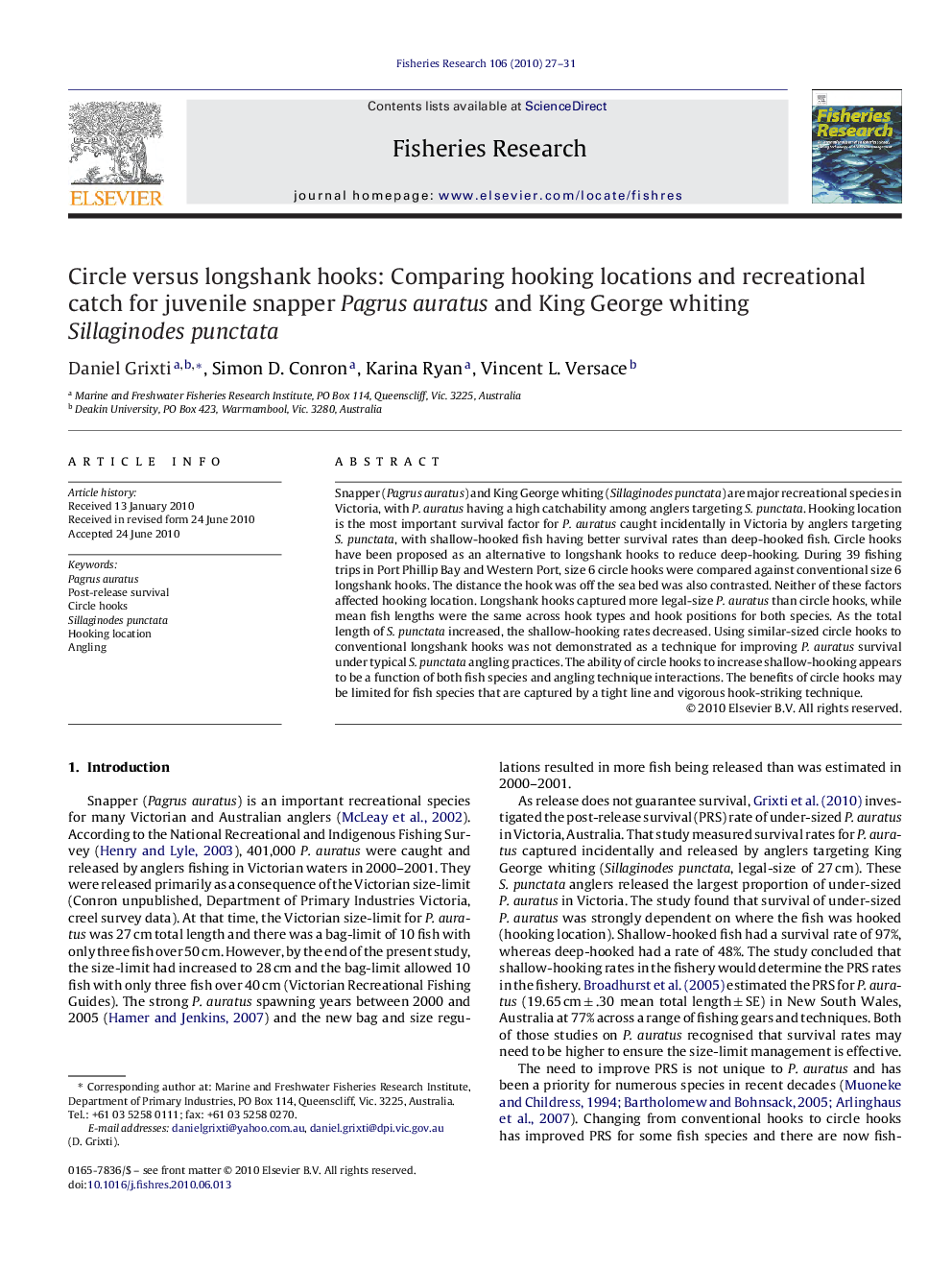| Article ID | Journal | Published Year | Pages | File Type |
|---|---|---|---|---|
| 4543926 | Fisheries Research | 2010 | 5 Pages |
Snapper (Pagrus auratus) and King George whiting (Sillaginodes punctata) are major recreational species in Victoria, with P. auratus having a high catchability among anglers targeting S. punctata. Hooking location is the most important survival factor for P. auratus caught incidentally in Victoria by anglers targeting S. punctata, with shallow-hooked fish having better survival rates than deep-hooked fish. Circle hooks have been proposed as an alternative to longshank hooks to reduce deep-hooking. During 39 fishing trips in Port Phillip Bay and Western Port, size 6 circle hooks were compared against conventional size 6 longshank hooks. The distance the hook was off the sea bed was also contrasted. Neither of these factors affected hooking location. Longshank hooks captured more legal-size P. auratus than circle hooks, while mean fish lengths were the same across hook types and hook positions for both species. As the total length of S. punctata increased, the shallow-hooking rates decreased. Using similar-sized circle hooks to conventional longshank hooks was not demonstrated as a technique for improving P. auratus survival under typical S. punctata angling practices. The ability of circle hooks to increase shallow-hooking appears to be a function of both fish species and angling technique interactions. The benefits of circle hooks may be limited for fish species that are captured by a tight line and vigorous hook-striking technique.
